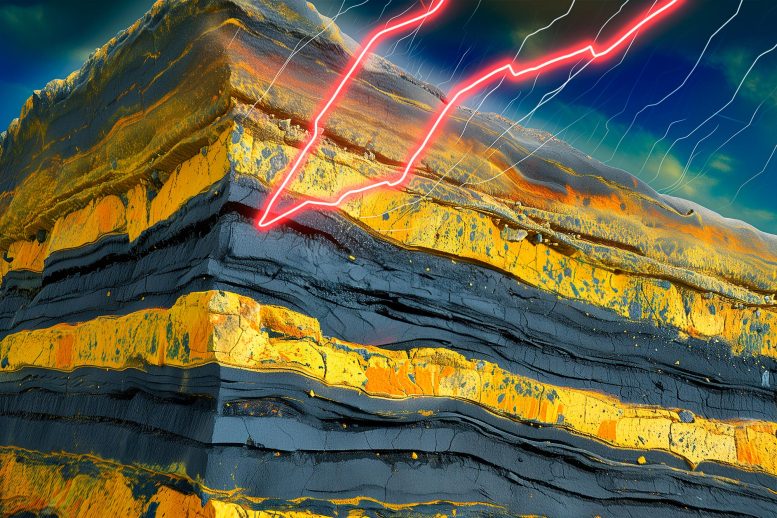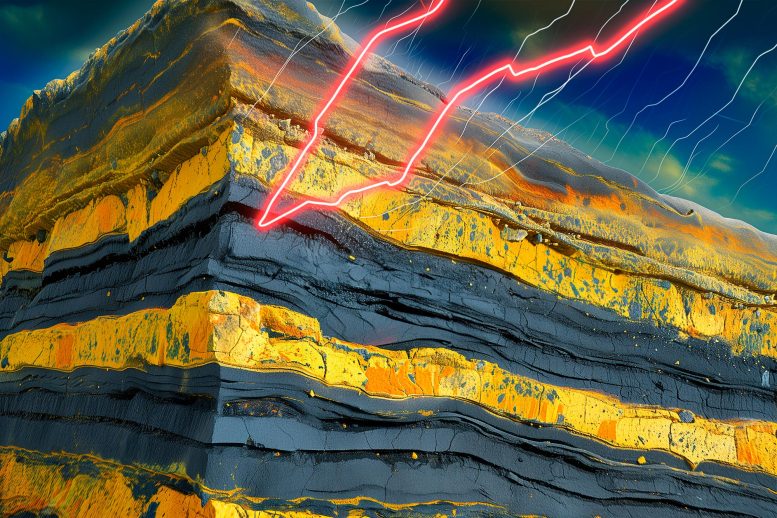

Terahertz (THz) spectroscopy is an emerging tool in oil shale resource evaluation, offering various applications such as oil identification and THz dating. Scientists are researching its potential, facing challenges but recognizing its significant future role in oil shale exploitation. Credit: SciTechDaily.com
Researchers from China University of Petroleum (Beijing) offer a holistic insight into applying terahertz spectroscopy to characterize oil shale.
The current understanding of the oil generation potential of oil shale and the dynamic process of organic matter pyrolysis is still unclear, leading to the relatively slow progress in its development technology. Due to characteristics such as fingerprint property, low energy, penetration, and broadband, terahertz (THz) spectroscopy as an emerging evaluation method in the field of oil and gas resources has demonstrated research and application value in multiple aspects.
“These include THz dating, THz exploration, crude oil identification, crude oil emulsion demulsification process, pattern transitions of oil-water two-phase flow, disaggregation of crude oil in a magnetic field, PM2.5 monitoring, and grading,” explains Professor Kun Zhao, who works at the Beijing Key Laboratory of Optical Detection Technology for Oil and Gas at the China University of Petroleum (Beijing), China.


Researchers comprehensively review the application of terahertz spectroscopy for the characterization and evaluation of oil shale. Credit: Kun Zhao from China University of Petroleum (Beijing)
To meet the requirements of new theories and methods for the efficient utilization of oil shale resources, Prof. Zhao and his “oil and gas optics” team from China University of Petroleum (Beijing), China, recently reviewed the advances and challenges in THz spectroscopy for the evaluation of oil shale. Their findings were published in Volume 2, Issue 4 of Energy Reviews in December 2023.
THz Spectroscopy in Oil Shale Research
In the review article, the team summarizes the applications of THz spectroscopy in characterizing anisotropy, organic distribution, fingerprint spectrum of kerogen, oil yield, pyrolysis process, and THz wave absorption of oil shale. In addition, they propose the potential pathway for THz technology, considering oil shale’s actual development in the future.
Taking advantage of the features of THz wave, a new concept of thermal THz analysis was developed to rediscover the pyrolysis model of kerogen. “The most important discovery of THz wave exploration is that the main oil generation zone and natural gas zone can be characterized simultaneously using THz spectroscopy, which is difficult to achieve using other standard methods,” points out Prof. Zhao.
The characteristic absorption peak of kerogen in the THz range provides a new insight into the research of kerogen in the microscale and nanoscale. The researchers also realized direct evaluation of the oil yield without pyrolysis due to the strong dependence of the anisotropic THz parameters on the oil yield to avoid environmental pollution.
Challenges and Future Prospects
“Although the important progress of THz wave characterization of oil shale has been achieved, the research breadth and depth are still lacking, and many challenges need to be solved,” highlights Prof. Zhao. As for practical application, in situ conversion is an inevitable trend for large-scale commercial development of oil shale in the future. It is expected for THz spectroscopy to monitor the downhole cracking process of oil shale and the productivity of oil and gas in real-time.
“THz wave is expected to become a sharp edge to overcome the bottleneck problem of oil shale exploitation after some specific problems are addressed, such as high-power light source, high sensitivity detection, fast scanning and imaging, micro-nano THz device, and strong environmental adaptability,” concludes Prof. Zhao.
Reference: “Characterization and evaluation of oil shale based on terahertz spectroscopy: A review” by Xuecong Liu, Kun Zhao, Xinyang Miao and Honglei Zhan, 16 August 2023, Energy Reviews.
DOI: 10.1016/j.enrev.2023.100041

